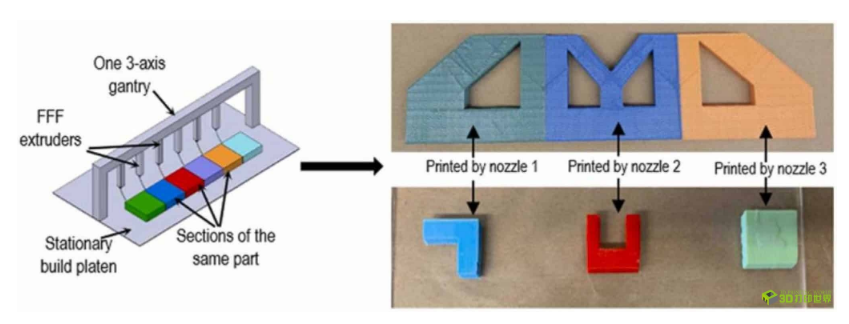American researchers have created a faster and more precise 3D printing process
Release time:
2023-09-22 14:14
from:
Researchers at the Rutgers School of Engineering have created a method for 3D printing large, complex parts at a fraction of the cost of current methods. The new method, called multiple fused filament fabrication (MF3), uses a single gantry, a sliding structure on a 3D printer, to print single or multiple parts simultaneously. By programming their prototypes to move in an efficient mode and depositing molten material through the use of a series of small nozzles, print resolution and size are increased and printing time is greatly reduced.

According to Rutgers University, the 3D printing industry has struggled with so-called throughput, the trade-off between how quickly a D printer deposits material and the resolution of the finished product. Larger diameter nozzles are faster than smaller nozzles, but produce more ridges and contours that must be smoothed in post, adding significant post-production costs. In contrast, smaller nozzles deposit material at higher resolution, but current methods using traditional software are too slow to be cost-effective.
Researchers at Rutgers University have created a faster and more precise 3D printing process, known as multiple fused filament fabrication (MF3).
At the heart of MF3's innovation is software. To program the 3D printer, engineers use a software tool called a slicer, in which computer code maps objects into virtual "slices," or layers, that will be printed. Researchers at Rutgers University wrote microtome software that optimizes the movement of the gantry arm and determines when the nozzle should be turned on and off for maximum efficiency. MF3's new toolpath strategy makes it possible to print multiple geometrically different, discontinuous, and differently sized parts simultaneously using a single printer.
The team details their research in the journal Additive Manufacturing.
Recommended news


